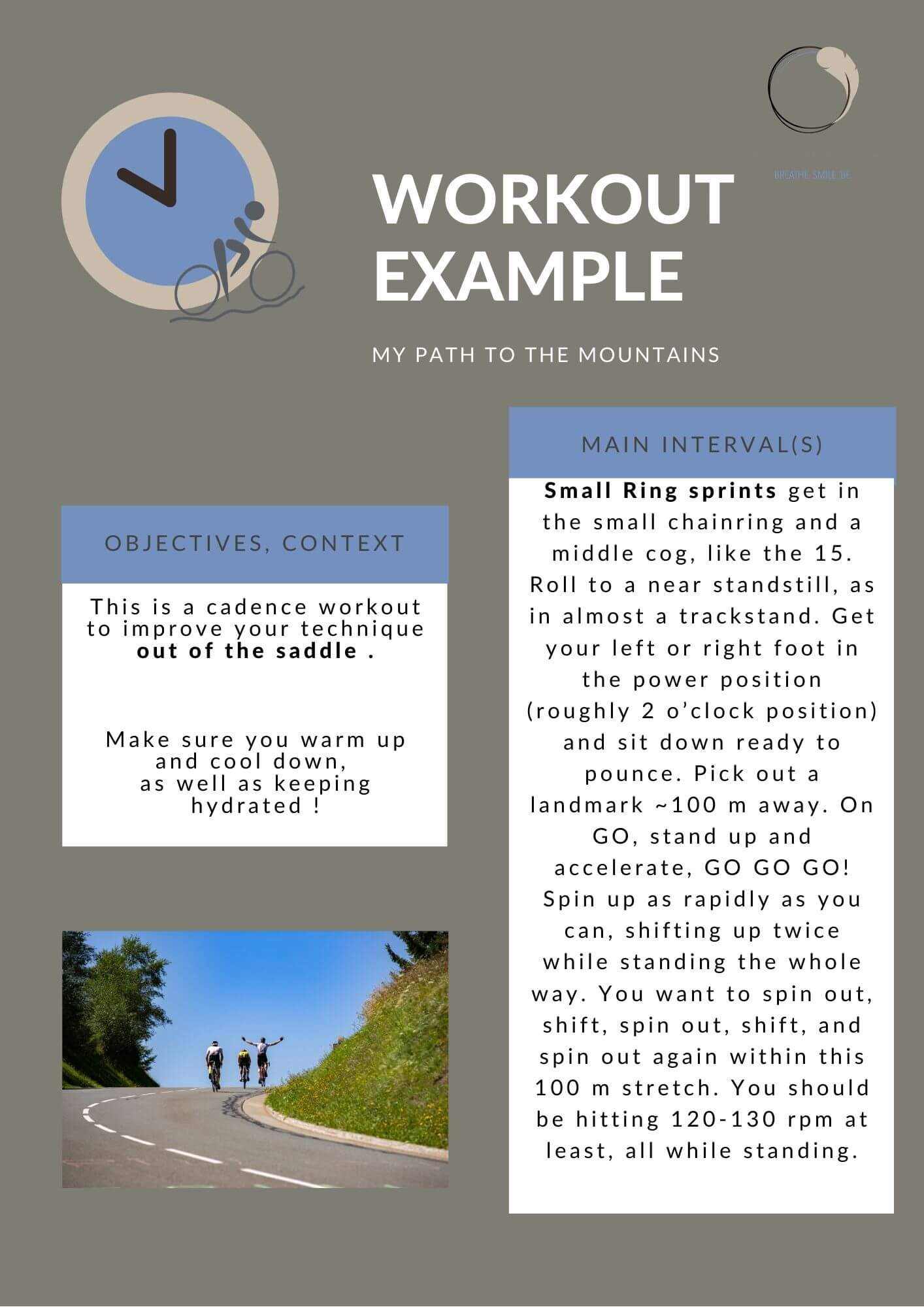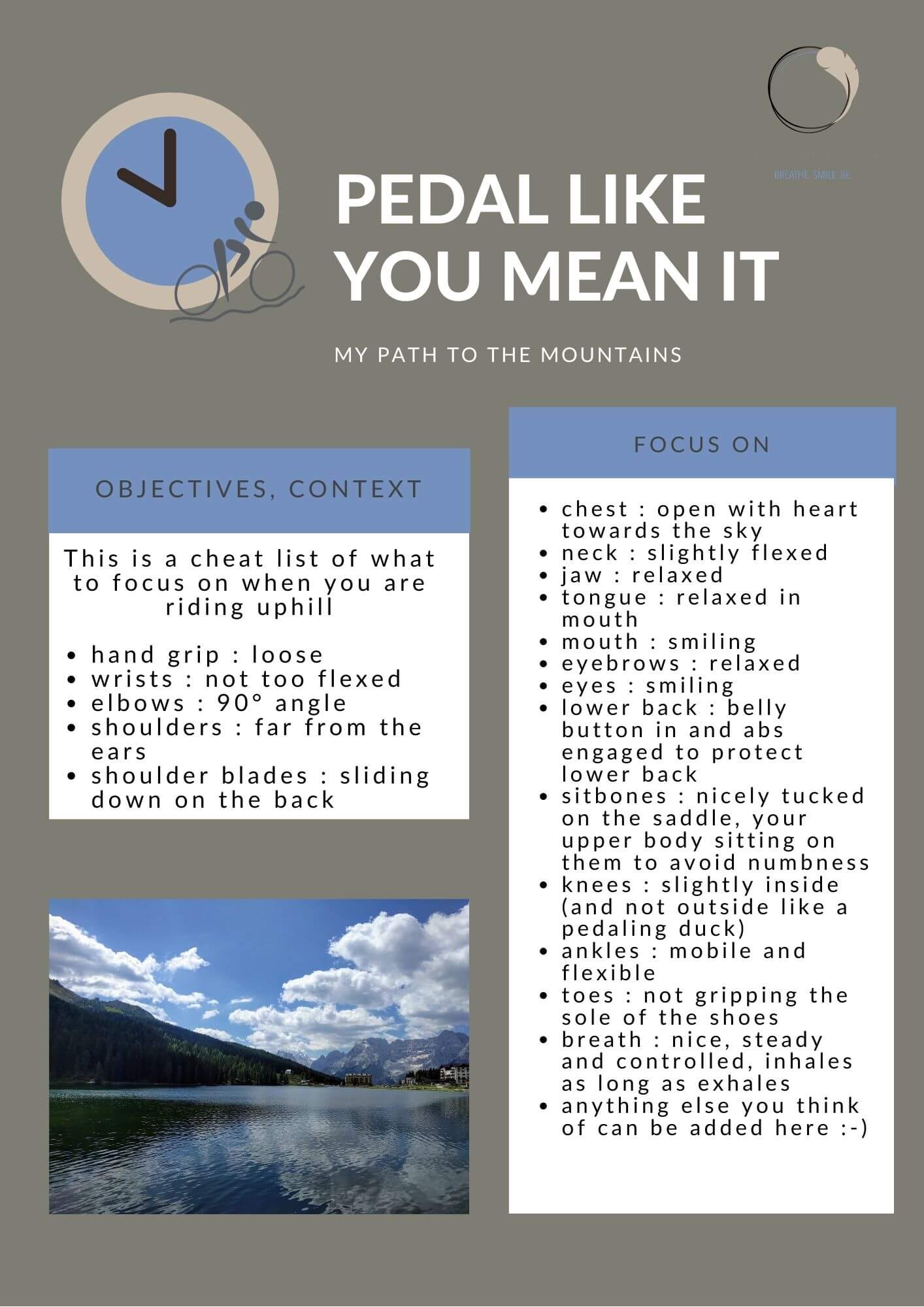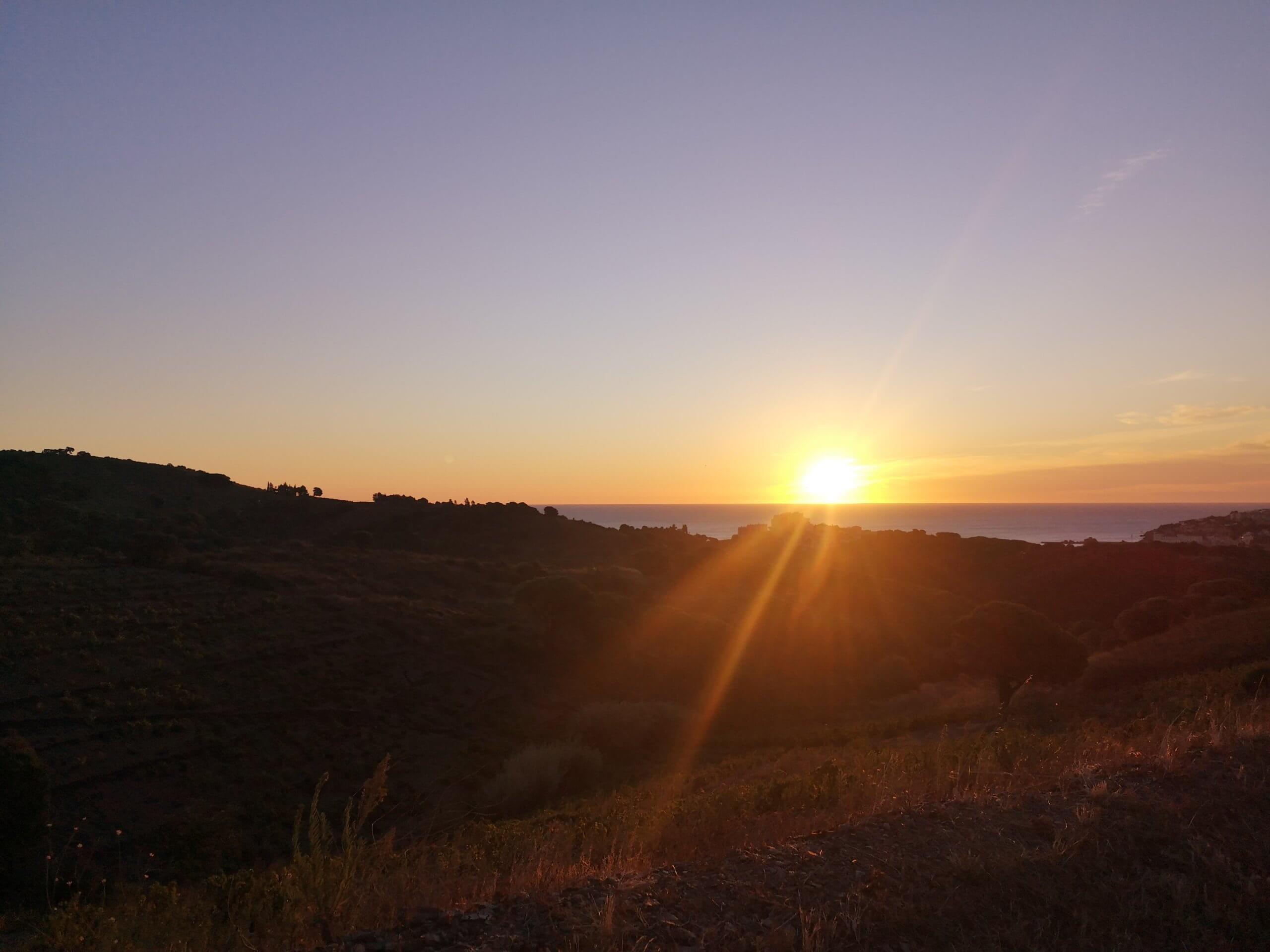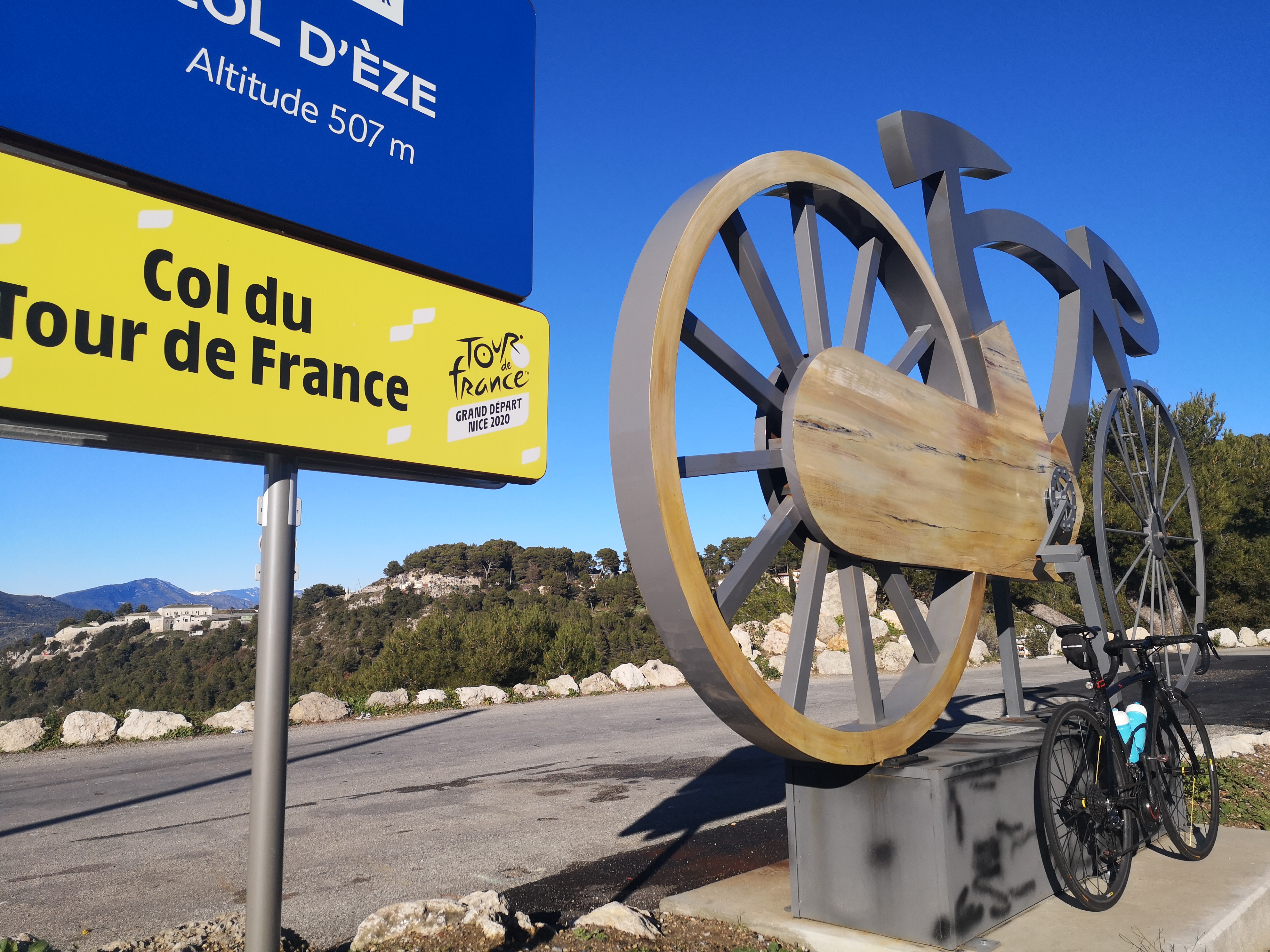Close your eyes, breath deep and imagine training and riding in the mountains… With Christmas approaching and some countries seeing an improvement of the Covid situation, we start thinking about the mountains, either because we see them capped with light layers of snow, or because we dream of skiing or (of course !) riding some climbs. If you are here, you know I am a big advocate of power meters, and they definitely are one of your best allies to prepare and tackle the mountains !
Pacing : a key to ride a mountain
The pace you choose is THE most important parameter to allow you to ride safely up the climb, and to enjoy it all the way. Only a power meter can allow you to know this pace : we have all done it ! Feeling fresh at the start, we ride the first mountain hard, the second one, and.. when the third on comes, we are just too tired to go faster than the local snail. The definition of your Functional Threshold Power is the power above which fatigue occurs quickly. Riding above threshold will only last for some dozens of minutes, whereas riding below threshold can last several hours. It is of the utmost importance that if you ride in the mountains, you pace yourself (meaning you slow yourself down at the beginning of the climb), so that you can keep your power and pace all the way to the top.
We tend to pace ourselves based on how we perceive the exertion or effort. However, what we feel isn’t proportional to the reality of our effort : the same power might feel easy at the start of a workout, but incredibly hard at the end ! Hence two aspects of pacing : the first one is to choose a power which is below your threshold, typically sweet spot (sub-threshold or high tempo) is a good choice (see below), the second one is to learn to keep a constant power output/pace.
Variations of power of +/- 10 to 20% compare to constant power do not lead to differences in terms of neuromuscular fatigue, like this study proved. Any cyclist who has raced criterium will tell you however that jumping from sub-threshold to very higher powers (such as when you get out of a corner) is incredibly tiring so if you want to keep some power all the way to the end, you have to refrain yourself from pushing very hard on the steeper parts. Your power meter will be the tool to keep you in the right zone, 88-93% of your FTP (the sweet spot zone as defined by Dr. A. Coggan) is a good aim.
Workout example
You can train your pacing strategy at any power. I would advise to start keeping a constant power output at lower endurance zone (56% to 65% of your FTP) : ride at this power outdoors and observe how your power vary (you might want to look at your 3 sec power average at first to make it easier for you), learn to not push that much on the little hills, and to push more on the flats to keep the watts in this desired zone. Once you feel you are mastering the endurance pacing skill, increase the power but still try riding at a constant pace, play with yourself and explore how it feels to maintain a certain power output for a certain duration.
Sweet spot training for the best mountain preparation…
As explained above, sweet spot is going to be your best friend uphill ! The higher your FTP, the faster you will go uphill of course, and if you have a high power to weight ratio (meaning a high FTP coupled with a light weight), you’ll go even faster. I’m not saying that power to weight is the only thing you need to aim at if you want to be able to ride in the mountains, basically you need to focus on your FTP as this will be your top end power output in long climbs, and if you eat a balanced diet, there shouldn’t be any need to stress about carrying too much weight uphill, except if you are racing and aiming at being the fastest (but if that was the case I would imagine you’d have a proper coach and nutritionist already with you and wouldn’t be reading this page !).
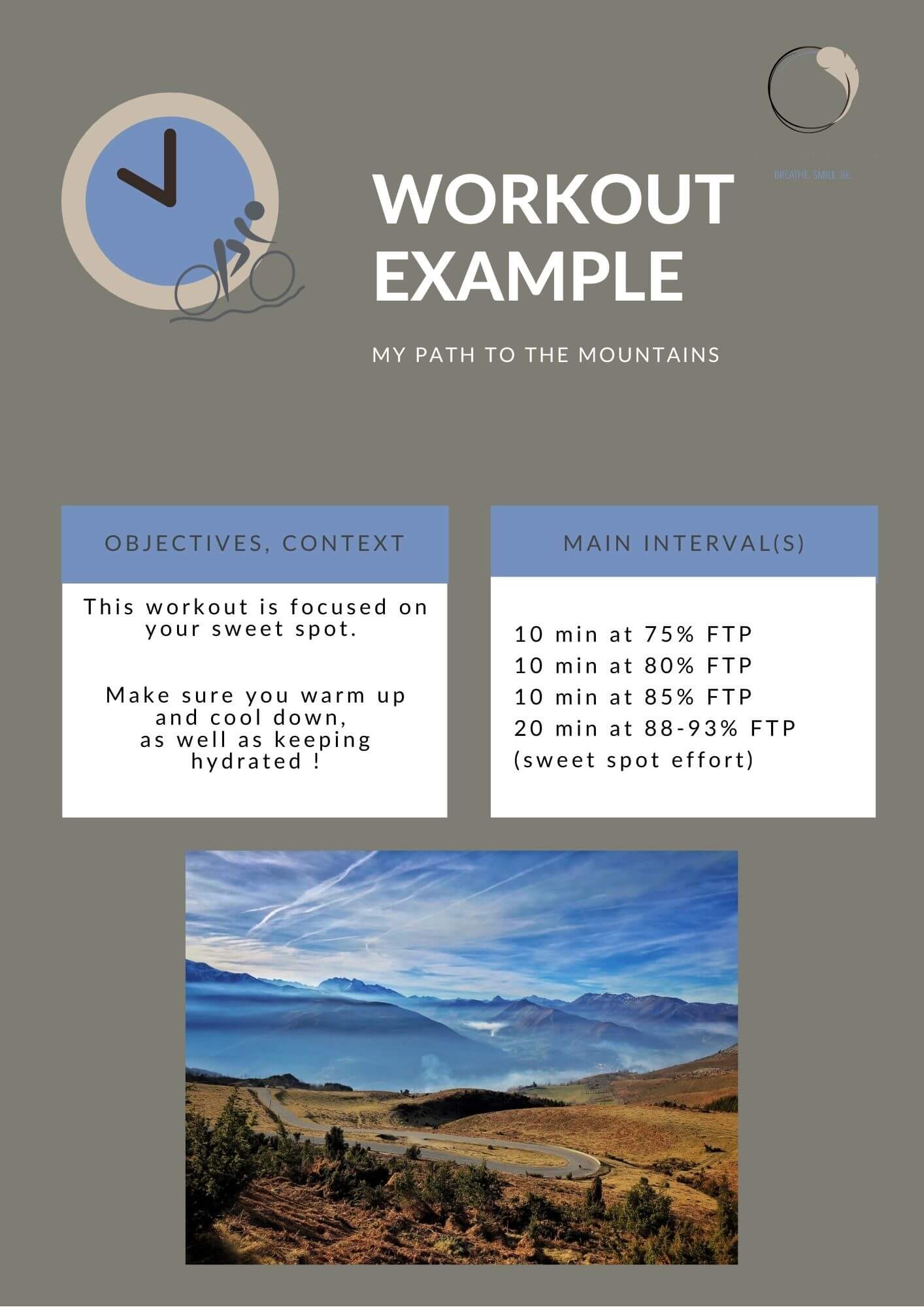 Sweet spot will then also be an amazing friend in your training : in this zone, the workouts have the abilities to increase your FTP by inducing the following adaptations more than if you were riding in another power zone : increased plasma volume, increased muscle mitochondrial enzymes, increased lactate threshold (data from Training and Racing with a power meter). Spending more and more time at sweet spot will allow you to get used to your mountain pace and will contribute to increasing your FTP.
Sweet spot will then also be an amazing friend in your training : in this zone, the workouts have the abilities to increase your FTP by inducing the following adaptations more than if you were riding in another power zone : increased plasma volume, increased muscle mitochondrial enzymes, increased lactate threshold (data from Training and Racing with a power meter). Spending more and more time at sweet spot will allow you to get used to your mountain pace and will contribute to increasing your FTP.
Workouts example
There are so many ways to enjoy good training around your sweet spot ! Start with including 2 times 10 minutes at 88-93% FTP at 90-100rpm in your rides, increasing the time from one workout to the next (to 15 minutes, then 20 minutes). Then add some tempo work after your sweet spot intervals, at 75-80% FTP. One of my favourite sweet spot training is a power ramp which challenges your aerobic endurance and your fatigue resistance !
… With cherries on top
Your FTP isn’t your everything on the bike. You do need to work on your VO2max or MAP (Maximal Aerobic Power) if you want to increase your FTP. The VO2max could be described as the roof of your own power house, and your FTP as the ceiling. If the roof is too low, your FTP will not be able to get any higher. The VO2max efforts, by pushing your body to its aerobic limit, will also allow you to get acquainted to this feeling and it will mentally help you manage the threshold efforts better.
It is also extremely important to work here and there on your anaerobic capacity, your ability to manage efforts from 30 seconds to 2 minutes. Indeed, these are the efforts you will need to produce if there is a steep part in your climb, and when the slope reaches two digits, it becomes quite hard to keep a pace under threshold ! So you will need to spend some time here and there playing around with these feelings so that you are fully ready for the mountains.
Workouts example
I would suggest adding some VO2max (3 to 8 minutes all-out) efforts in your training, once a week during your winter foundation training, more often in the late spring (up to once a week, depending on how your body react to these trainings). Fr-or highly trained athletes, a VO2max training block can also be interesting (with 2 to 3 VO2max workouts a week) two months prior to the event you are training for.
As regards to anaerobic capacity, you can include some 1 minute all-out intervals here and there once a month during your winter preparation, and in late spring add an anaerobic workout every other week when you are fresh, but not more than this is the mountains are your only goal.
Pedaling technique in a climb
Non stop pedaling
From now on, the tips are non related to using your power meter ! One of the main differences between riding a climb and being on the flat is that you have absolutely zero moment of rest, you are constantly turning your legs. On your usual rides, I guess there are always some little moments when you can free-wheel, stand up on the pedals and stretch the legs or just stop spinning. Uphill is not the best place to do that, unless you are happy to roll a few meters backwards so that you can climb some more !
Workouts example
Notice when you stop spinning the legs during your rides : is it in the descents ? on speed bumps ? when you are in the wheels of your riding buddies ? when you start feeling tired ? Whatever the moment is, you have to first become aware you stopped turning your legs, and then it’s all about keeping the rotations per minute on : you can keep pedalling when you go over speed bumps, you can keep pedalling in the descents ! The fatigue from this constant spinning is real so you have to train your ability to maintain a constant spin.
Efficient pedal stroke
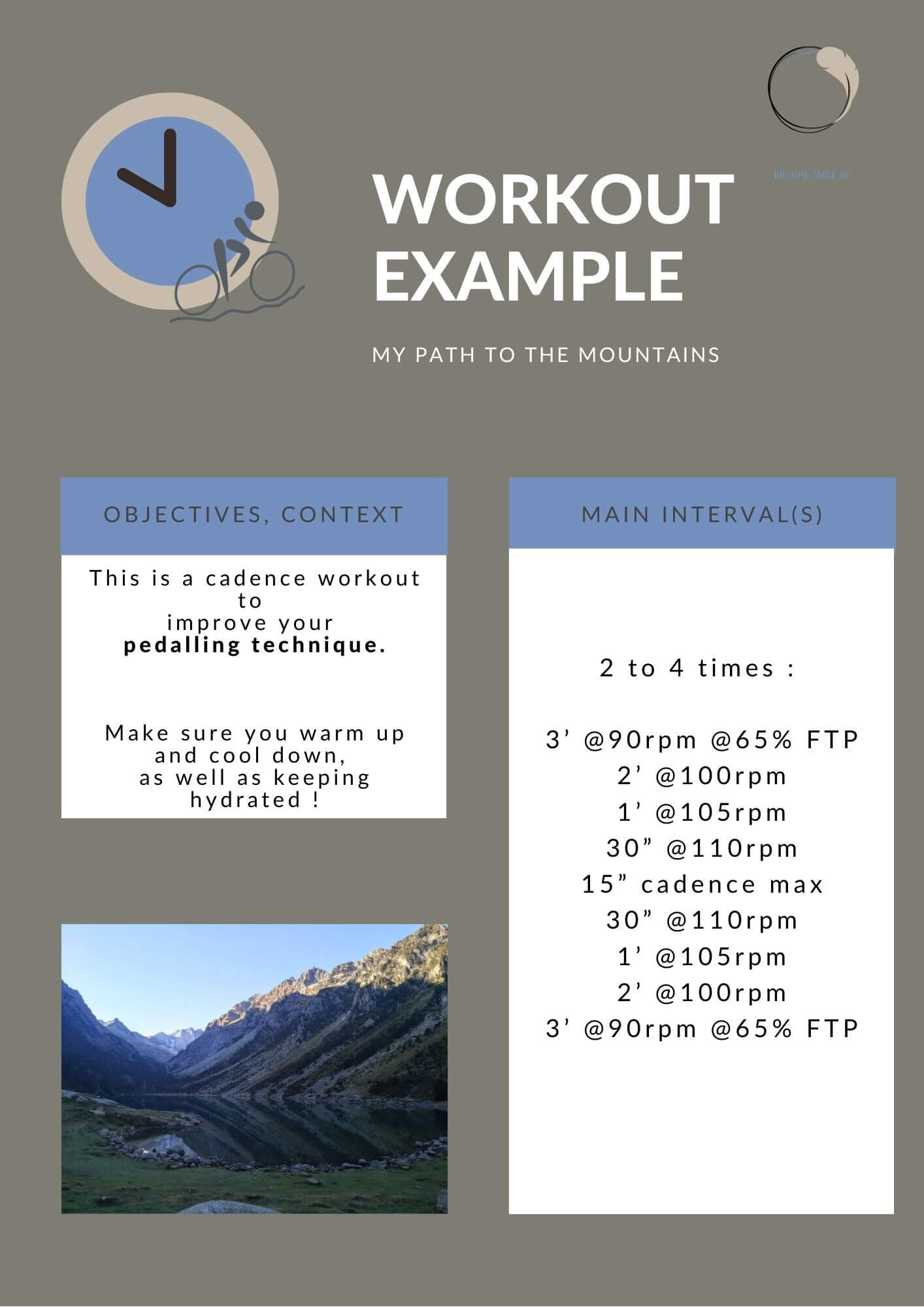 Along with the previous observation, having an efficient and effective pedal stroke is important to keep you spinning smoothly. That means being able to not only push but also pull on the pedals, so that the effort doesn’t rely only on the prime movers (glutes and quadriceps). That also means you don’t want any parasite movements as you want all your energy to go to the unique goal of powering you uphill : no knee wobbling, no rocking on your saddle, no dancing with your shoulders. First things first, a proper bike fit will allow you to fully trust that your position is suitable for your body on your bike. From there, a good way to improve your pedal stroke is to push this skill to its limit (meaning high cadences) so that you can feel if there are any dead spot or lack of coordination.
Along with the previous observation, having an efficient and effective pedal stroke is important to keep you spinning smoothly. That means being able to not only push but also pull on the pedals, so that the effort doesn’t rely only on the prime movers (glutes and quadriceps). That also means you don’t want any parasite movements as you want all your energy to go to the unique goal of powering you uphill : no knee wobbling, no rocking on your saddle, no dancing with your shoulders. First things first, a proper bike fit will allow you to fully trust that your position is suitable for your body on your bike. From there, a good way to improve your pedal stroke is to push this skill to its limit (meaning high cadences) so that you can feel if there are any dead spot or lack of coordination.
Workout example
I love cadence pyramids, they are great ways to train your pedal stroke and to make long endurance rides go faster ! Here is an example of what to do (adapt the cadence indications to your current abilities)
Another lovely workout is to include single legged bouts of 30 seconds to 1 minute during your warm up, recovery or cool down. You might look a bit funny but these drills (one leg clipped in, the other one unclipped) will teach you a lot.
Out of the saddle
Riding out of the saddle is not “natural”, it uses different muscles than riding in the saddle. When thinking about climbing, riding out of the saddle is going to be your “recovery” moment. It can also be your attacks of course ! It can be a recovery moment if your body is used to riding out of the saddle, so that just by using different muscles, your other muscles get a chance to breath and relax a bit, which will help tackling your fatigue from repetitive movements. Riding uphill, you can simply get into the pace of riding out of the saddle for a few seconds every other minute.
Workouts examples
To improve your ability to ride out of the saddle, you can work on two aspects : the technique, and then the duration you spend out of the saddle. To improve your technique, two kind of skills are useful :
- riding out of the saddle at high cadences, such as when doing small ring sprints,
- or riding out of the saddle at very low cadence, such as when you do low-cadence high-torque intervals, really trying to use your arms to balance the handlebars from left to right.
Relaxed upper body
Who’s feeling tight shoulders or neck after a strenuous effort on the bike ? Good news is : you don’t need to be in pain there to enjoy the mountains ! Relaxing your upper body is important as it allows you to keep your energy to power up the hill, and to avoid useless pains and discomfort. There is a fine balance between keeping your back straight and core engaged and not adding any more tension to it.
Think about riding with your shoulders far from your ears , and your chest opened as if you were a Baywatch hero !
Core training for your best experience uphill
A strong core is incredibly important : it will not push you uphill faster, yes, but it will allow you to ride longer and pain free, it will allow you to avoid this lower back pain you often feel. Gift yourself with a core session 2 to 3 times a week, it doesn’t need to be more than 20 minutes long and it will make a huge difference on the long run and in your bike handling skills.
My favourite preparation for core training is Tom Danielson’s Core Advantage book !
Strong muscles
Improving your leg muscles force is another essential aspect of the improvement of your functional threshold. Force is something you can train on the bike doing low-cadence drills : I couldn’t find research studies showing how low-cadence drills would increase your force. To show you the difficulty to find an answer to this question : one study showed that these drills would increase the power output at lactate threshold for untrained male cyclists, when another one showed that it wouldn’t improve cycling performance for veteran cyclists. When building force or strength, the protein intake is as important as the training stimulus and these parameters were not take into account in the aforementioned studies.
Thus, there is no proper study (yet) showing the effectiveness of low cadence drills on the bike to build strength. If you decide on using them, be mindful to go for them in a progressive way, increasing gently the time spent at low cadence to preserve the integrity of your tendons, and decreasing the cadence bit by bit.
In the gym, you have to go for heavy weights especially if you are a male over 40, or a female over 25 (which are the approximate age when muscles start declining and need external stimulation to be maintained). For female riders with natural menstrual cycles, use your follicular phase to build muscles, and the luteal phase to work on your plyometrics. For women in menopause, the lack of estrogen and its anabolic effects leads to changes in your training: you need to incorporate more heavy lifting and plyometrics as well as more protein intake to stimulate muscle protein synthesis (to maintain and build lean muscle mass, keep a healthy body composition and limit the risks of sarcopenia). A good way to do that would be to slightly reduce your volume on the bike and add some more gym time (for instance doing 20 minutes of heavy lifting before going riding).
And all the other details !
Hydration & Nutrition
The mountains will ask you to put your best self forward, and for that you need to be hydrated and fueled enough ! Hydration is in your bottle (try out 1/2 lemon juice, salt and 1 tbsp of maple syrup in your 500 mL water bidon), and fuel is in your pocket. The same advices as for any kind of ride applies, except that you might want to train yourself to eat while making threshold efforts so that you become more used to chewing some food and powering up on the pedals at the same time.
Mental preparation
Your mental preparation is of course of the utmost importance. I have already explained why mental training is so important, and the mountains are no exceptions. There are two aspects which make them mentally challenging : the length of the efforts and the stress of descending for those not feeling comfortable with it. To prepare for the duration of the efforts, you need to improve your focus, your ability to direct your attention to one thing at a time for 20 minutes to 2 hours. Try to disconnect from phone and emails and to work only on one thing at work, you will see that it is not as easy as it seems !
To manage the stress of the descents, I would advise learning some breathing techniques to relax (learning to exhale longer than you inhale) and to use visualisation to prepare for the descents. Start by watching many videos of descending cyclists (road and mountain bike), look at their positions on the bike and where they look, and then visualise yourself (with eyes closed, why not while spinning your legs on your turbo trainer) going downhill in a smooth and happy way.
Gaze
Your stem might be made out of diamond, you need to learn to detach from looking at it during the efforts ! Our gaze is a huge part of our concentration, , and where focus goes, energy flows : if you look ‘down’ on your stem, you will not go ‘up’. Looking up towards where you are going will drive your body towards this unique goal :riding up.
In yoga, the gaze is an important part of the asana (movements) practice, it is called drishti in Sanskrit. Drishti doesn’t only means gaze, it also means vision, a point of view, opinion, wisdom, attitude. Look up like you mean it, believe that you are riding up; sometimes, just the courage of looking up will make the effort feel less painful, because you just evolved from sustaining a hard effort to envisioning a goal.
Workouts example
Well, the first step is (again !) to become conscious that you are looking at your stem sometimes. Each time you ride, indoors or outdoors, be mindful of it. And bit by bit you will realise your gaze gets out of your control, and then simply bring it back to looking up and forward.
I know, that makes the list of everything you need to focus on quite long ! These many things to think about will help you keep your mind focused. Concentration is a trainable skill, so don’t wait until you are at the bottom of the climb to start thinking about all these details. I would suggest you write them all down and stick them on your top tube or on the wall of your turbo-trainer pain cave.
For more training ideas, look at our pre-built training plans !

